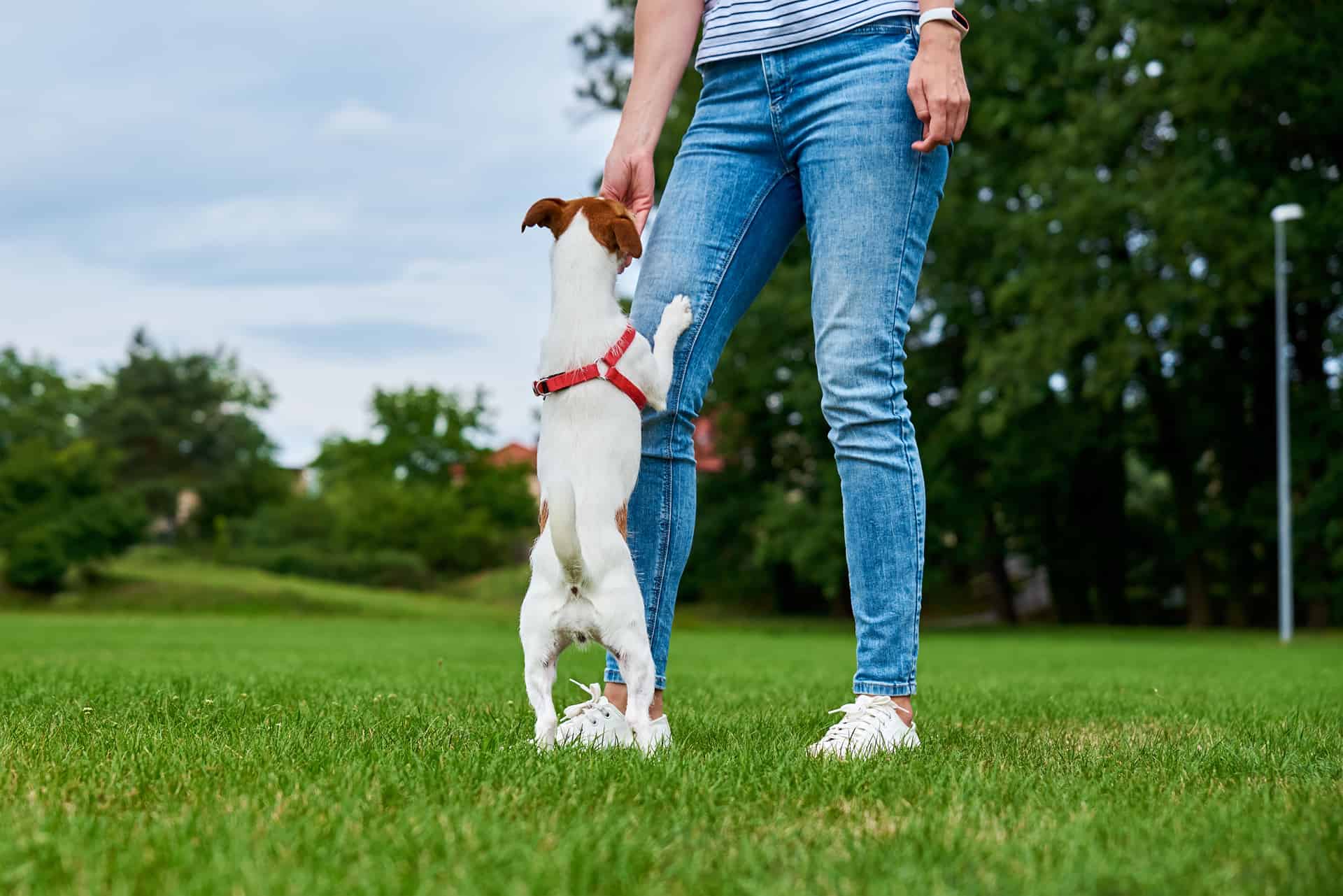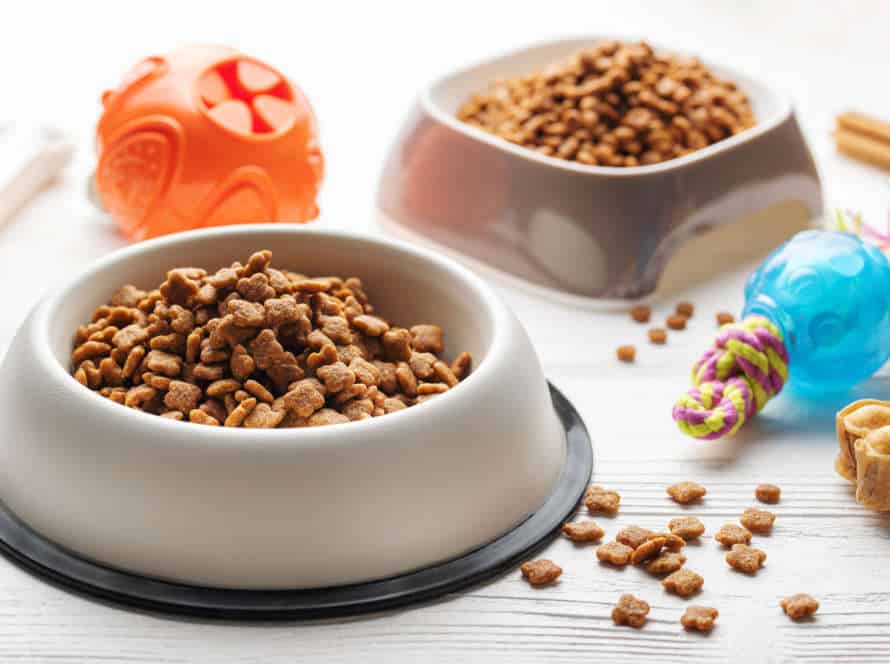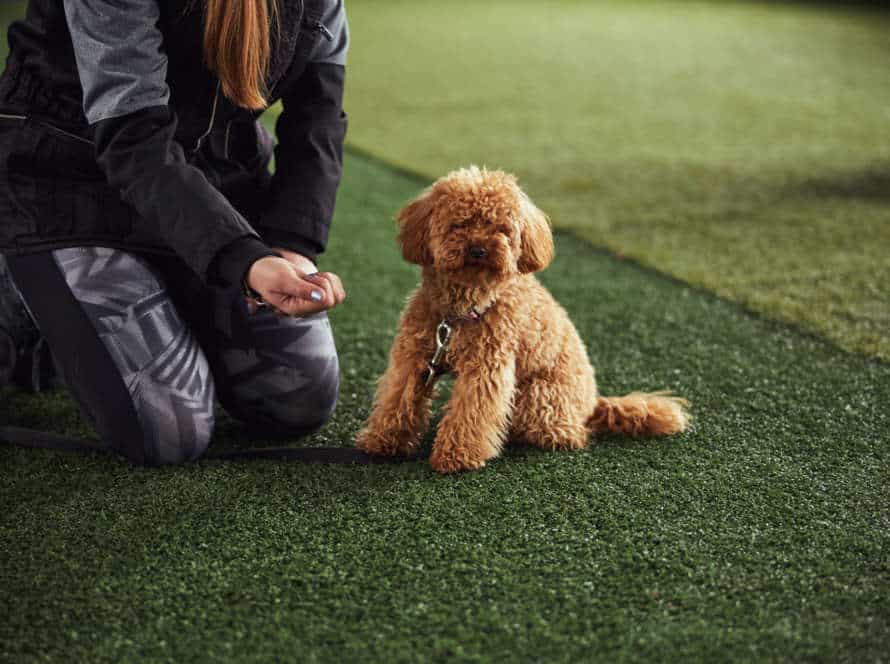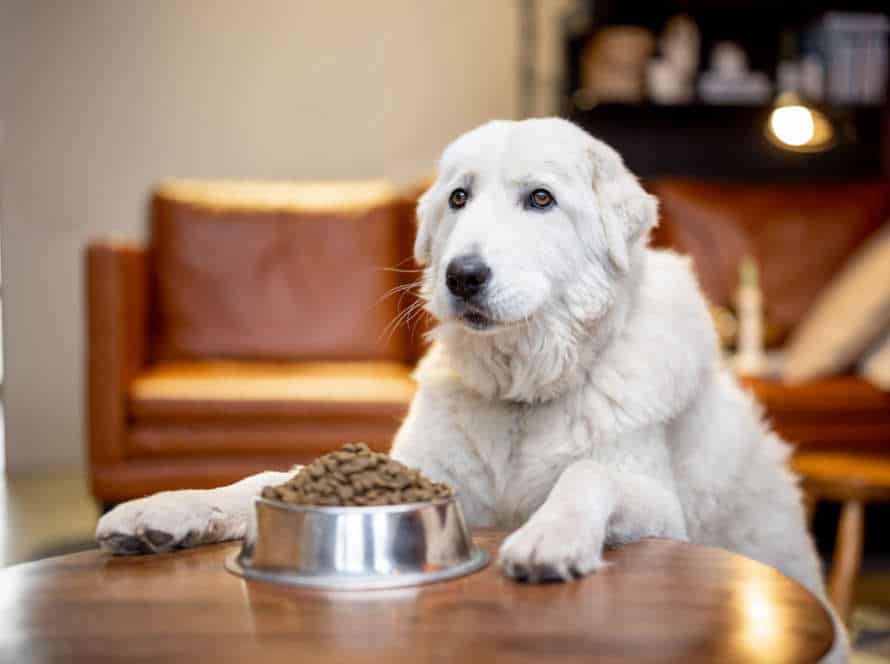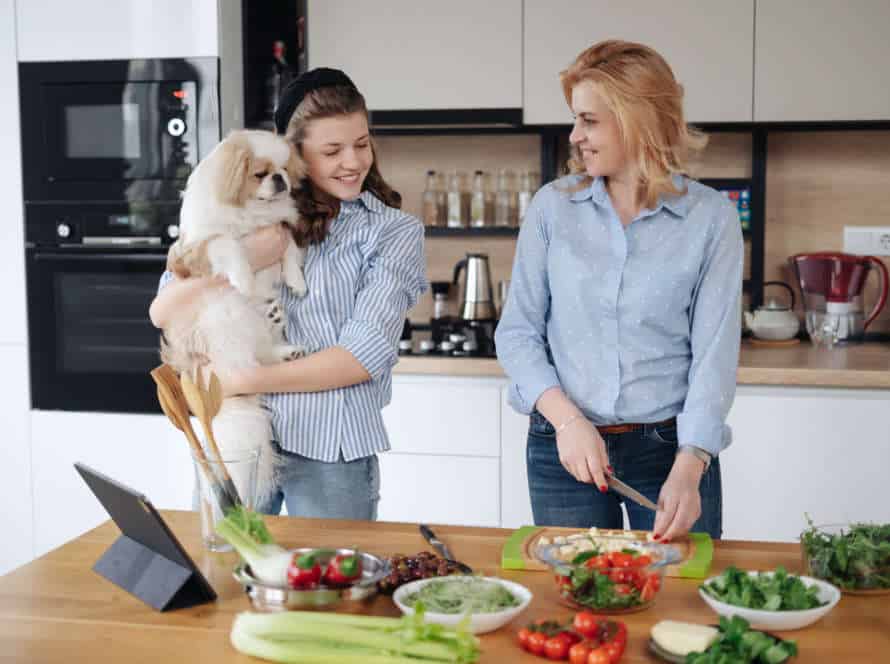Positive Reinforcement: Transforming Your Adult Dog’s Behavior
Positive reinforcement is the secret ingredient to transform your adult pup’s habits. Dogs react better to positive than negative reinforcement, and it helps build a strong and healthy bond with your pup.
To achieve this, follow these steps:
- Work out what behavior you’d like to modify and understand why your dog is engaging in it.
- Reward your pup with treats, compliments, or playtime when they carry out desirable behavior.
- Instead of punishing them, ignore or redirect undesirable behavior.
- Consistency in training and rewarding good conduct is vital to promote positive behavior traits.
- Make positive reinforcement a normal part of life to strengthen your relationship with your pup.
Positive reinforcement may be time-consuming but it is worth it in the end. It results in more positive engagements, fewer problematic behaviors, and a happier dog-human relationship.
Understanding Positive Reinforcement
Positive reinforcement is a powerful tool when it comes to training adult dogs. It’s based on the idea of reinforcement, where rewards are used to shape, teach and keep desired behaviors. To begin training an obedient adult dog, it’s important to understand the basics of positive reinforcement. Let’s dig deeper!
What is Positive Reinforcement?
Positive Reinforcement is a technique used for training. It encourages good behavior by rewarding it. For example, when training a dog, give treats or praise for good behavior. If the dog stops barking when commanded, reward it with a treat.
Positive reinforcement helps modify the adult dog’s behavior. It lets them associate good behavior with positive outcomes. To make this work, the reward should be immediate and frequent.
Using positive reinforcement is an effective way to train an adult dog. It builds a healthy and happy relationship with your pet.
How Positive Reinforcement is Used to Train Dogs
Positive reinforcement is a great way to train your pup! Reward them with treats, praise, or playtime when they do something good. This helps build a strong bond between you and your pup.
Plus, you can use positive reinforcement to correct bad behavior like barking, jumping, or aggression. By rewarding good behavior, your pup will learn that it’s even more rewarding than bad behavior.
Pro tip: Keep your training sessions short and use high-value rewards to reinforce positive behaviors. This will keep your pup engaged and excited about training!
Benefits and Limitations of Positive Reinforcement
Positive reinforcement is an amazing way to teach your adult dog. It means rewarding them when they do something good, instead of punishing them for something bad. There are lots of benefits to positive reinforcement:
- It encourages better behaviour.
- It builds trust between you and your pup.
- It helps reduce stress.
However, there are a few limitations to be aware of:
- You need to be consistent and timely.
- It might not work with all breeds.
- Too many treats can lead to health issues.
A Pro Tip: Use consistent timing and rewards for the best results. Give your pup praises and affection along with treats, to avoid over-treating.
Applying Positive Reinforcement Techniques
Positive reinforcement is a must when training dogs. It’s all about rewarding them for good behaviour and ignoring bad behaviour. With this technique, it’s possible to break bad habits, form new ones and build a strong connection between the dog and their owner.
This article discusses the techniques of implementing positive reinforcement to help adult dogs with their behaviour.
Timing and Consistency in Positive Reinforcement
Positive reinforcement is an effective way to change your adult dog’s behavior. But only reinforcing good behavior isn’t enough. Timing and consistency are key for success. Here’s how to use positive reinforcement for maximum effectiveness:
- Timing: Reward your dog’s behavior right away. Delays can be confusing and make it harder to link the behavior and reward.
- Consistency: Give a reward every time the behavior happens, especially in the beginning. Inconsistent reinforcement can be annoying and will slow down the learning process.
In conclusion, positive reinforcement is very useful when used properly. By rewarding good behavior quickly and consistently, you can train your adult dog better and create a stronger bond with them.
Clicker Training: How to Use it Effectively
Clicker training is an effective way to train your dog. It rewards good behavior, and can help your pup improve quickly. Here are some tips for successful clicker training:
- Introduce the clicker to your pup and get them used to the sound.
- Pick a behavior you want to teach – like sitting or rolling over.
- Click each time your pup follows the behavior, then give a treat.
- Consistency is a must – use the clicker and treat combo every time.
- Reduce treats and clicks, but keep praising with words.
With positive reinforcement and clicker training, you can change your adult dog’s behavior in a fun and efficient way.
Examples of Positive Reinforcement Techniques
Positive reinforcement is an effective way to train. Reward desirable behaviour to make it happen again.
Here are some examples for adult dogs:
- Treats – Give small treats to show good behaviour.
- Praise – Praise them in a happy tone to show approval.
- Playtime – Use their favourite toy to reward them.
- Belly Rubs – Many dogs love belly rubs as a reward.
- Clicker Training – Click sound to signal good behaviour, followed by a treat or praise.
Be consistent with positive reinforcement. And find the rewards that work best for your pup!
Averting Negative Behavior with Positive Reinforcement
Positive reinforcement training is a fantastic method to stop and avoid negative behaviors in adult dogs. This kind of training teaches adult pooches to exchange undesirable or destructive behavior with positive, rewarding ones. Here, we will cover how positive reinforcement is an effective and kind way to improve the behavior of your grown-up pup.
How to Distract Your Dog from Negative Behavior
If your pup’s doing any negative things, try distracting ’em with positive reinforcement. This means rewardin’ good behavior instead of punishin’ bad behavior. That’ll lead to better results in the long run. Here’re some tips:
- Use tasty treats! Pick somethin’ yer pup loves and only give it for good behavior.
- Redirect attention: If yer pup’s doin’ something bad, point ’em to a toy or activity they like.
- Consistency’s key: Always reward good behavior, even if it’s small. Consistency will help make it a habit.
Positive reinforcement can help turn bad habits into good ones. Pro tip: Don’t forget to give your pup plenty of exercise and attention. Boredom can lead to bad behavior.
Redirecting Your Dog’s Attention with Positive Reinforcement
Positive reinforcement is a great way to divert your pup’s conduct away from the negative. Instead of punishing bad behavior, you can reward good conduct. Here’s how to use positive reinforcement to redirect your pooch:
- First, figure out what behavior you want to change and what you want your pup to do instead.
- Utilize treats or praises to grab your pup’s attention and reward them when they do the desired action.
- Make sure to be consistent in rewarding good behavior and ignore the bad to prevent reinforcing the negative.
- Continue to use positive reinforcement consistently over time to support the right behavior and change your pup’s behavior effectively.
Pro tip: Make sure rewards are immediate and consistent to reinforce good behavior rapidly.
Using Positive Reinforcement Training on Aggressive Behaviors
Transform your adult dog’s behavior and avoid negative behaviors with positive reinforcement training! This involves rewarding the pup for exhibiting good behavior, instead of punishing them when they behave badly. Here are some tips to start:
- Begin with basic obedience training. Use positive reinforcement techniques to teach your dog simple commands like “sit,” “stay,” and “come”.
- Use treats and praise as rewards for when your dog obeys.
- Reward good behavior in real-life situations. Look for chances to give treats and praise when normally their aggression would be triggered.
- Stay calm and consistent. React to aggressive behavior calmly and consistently, using positive reinforcement techniques to redirect their behavior.
With patience and persistence, positive reinforcement training can help your pup learn new behaviors and transform their aggression.
Overcoming Specific Issues with Positive Reinforcement
Positive reinforcement? It’s a great tool for changing adult dogs’ behavior. Aggression, anxiety, or obsessive behaviors? Positive reinforcement can help reshape the way a dog sees and acts. In this section, we’ll explore how to use reinforcement to tackle the challenges of adult dogs.
Separation Anxiety and Positive Reinforcement Training
Separation anxiety can be an issue for dogs and their owners. But, positive reinforcement training will help address it! Here are some steps:
- Start by desensitizing your dog to your departure cues. Dress for leaving, get your keys, then sit or do something else.
- Increase the amount of time you are away, starting small and getting bigger.
- Provide exercise, mental stimulation and socialization when you are there.
- Use positive reinforcement techniques like giving treats or a toy when you leave/return, or praising if they stay calm while you are away.
- Crate training can give a safe and secure spot when you are gone.
With patience and consistency, positive reinforcement training can help reduce separation anxiety and improve your dog’s behavior.
Potty Training Your Adult Dog with Positive Reinforcement Techniques
Training an adult pup can be tricky. But, if you use positive reinforcement techniques, it is doable! Here are some tips to help:
- Set a consistent daily schedule for meals and walks.
- When your dog does something good, praise ’em and give treats.
- If accidents happen, stay light-hearted and direct them to the right spot.
- Be patient and consistent, as it may take time for them to learn new habits.
With practice, positive reinforcement can create a great bond between you and your pet.
Curbing Barking and Jumping Behaviors using Positive Reinforcement
To address barking and jumping behaviors in adult dogs, positive reinforcement techniques can be used. These aim to reward good behavior, not punish bad.
Treats and praise for quiet behavior can help reduce barking. Avoid yelling or physical punishment, as this can increase anxiety and aggression. Exercise and positive attention are also useful.
Jumping can be addressed by rewarding calm behavior with treats and attention. Teach your dog to sit and stay when greeting people. To discourage jumping, turn your back or ignore the dog until they calm down. Exercise and mental stimulation can also help.
Positive reinforcement techniques not only address behaviors, but can also build a healthy and positive relationship between you and your furry friend.
Reinforcing Positive Training with Your Dog
Positive reinforcement is a super powerful way to educate your pooch on new talents and behaviors. Rewarding desirable habits enables you to guide your pup in the right direction swiftly and form a strong bond with them. In this section, we’ll explain how positive reinforcement functions and the top methods to use it with an adult dog.
Making Positive Reinforcement Part of Your Dog’s Daily Routine
Positive reinforcement can help you change your adult pup’s behavior. Here’s how:
- Choose a reward your pup loves – like treats, toys, or kind words.
- When they do something good, give them the reward straight away.
- Be consistent and patient, and avoid using negative reinforcement or punishing them.
- Make positive reinforcement part of their daily routine, even for small good behaviors.
- Over time, your pup will link the good behavior with the reward and do it more often.
Pro Tip: Positive reinforcement can tackle many behavioral issues, such as fear, aggression, and barking too much. But if you’re having trouble with a big problem, get a professional dog trainer.
Continuing Positive Reinforcement with Advanced Training Techniques
Positive reinforcement is a great way to train your pup. To take their behavior to the next level, try advanced techniques. Here’s what you can do:
- Lure-reward training: Small rewards like treats and toys can help your pup learn quickly.
- Use clickers: This tool helps capture and reinforce desired behaviors.
- Playtime: Rewards good behavior and strengthens your relationship with your pup.
- Positive verbal cues: Reinforce good behavior and build trust.
Remember, advanced techniques with positive reinforcement can transform your dog’s behavior. Pro tip: Make training sessions fun and under 15 minutes.
Incorporating Positive Reinforcement in Your Dog’s Lifestyle
Positive reinforcement: a great way to transform an adult dog’s behaviour. Reward good behaviour and redirect bad. Here are some tips:
- Tasty treats, verbal praise, physical rewards like petting or belly rubs.
- Redirect attention and reward when you catch them doing something wrong.
- Teach new tricks, commands, leash training with positive reinforcement.
- Be consistent with rewards. Avoid praising bad behaviour.
Positive reinforcement helps build confidence, reduce anxiety and aggression, and strengthens that bond between you and your pup!
Frequently Asked Questions
Q: What is positive reinforcement?
A: Positive reinforcement is a training technique that rewards desirable behavior with treats, praise, or affection in order to encourage the dog to repeat that behavior.
Q: Why is positive reinforcement better than punishment?
A: Positive reinforcement is a more effective and humane way to train a dog because it encourages desired behavior while building a positive relationship between the dog and owner, whereas punishment can cause fear, anxiety and aggression in dogs.
Q: What behaviors can be improved with positive reinforcement?
A: Positive reinforcement can be used to teach a wide variety of behaviors, including sit, stay, come, heel, leave it, and others. It is also effective for reducing and eliminating unwanted behaviors such as jumping, barking, and counter surfing.
Q: Can positive reinforcement be used for adult dogs?
A: Yes, positive reinforcement can be used on dogs of any age. Adult dogs can benefit greatly from positive reinforcement training, especially if they have developed persistent undesirable behaviors.
Q: How long does it take to see results from positive reinforcement training?
A: The time it takes to see results from positive reinforcement training will depend on the dog’s age, breed, temperament and the desired behavior. In general, consistent training over time will lead to improved behavior.
Q: Do I need a professional trainer to use positive reinforcement?
A: Although a professional dog trainer can be helpful, it is not required. There are many resources available online and in books that can guide owners on how to use positive reinforcement effectively.

